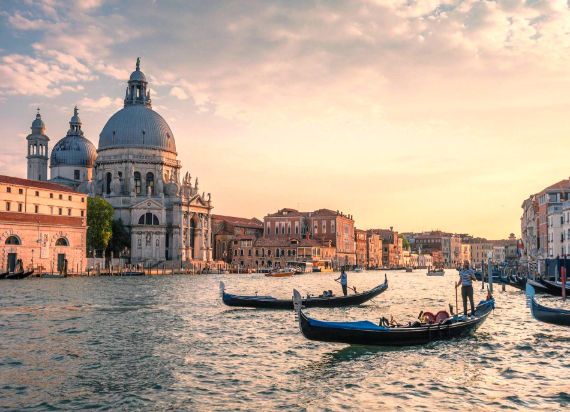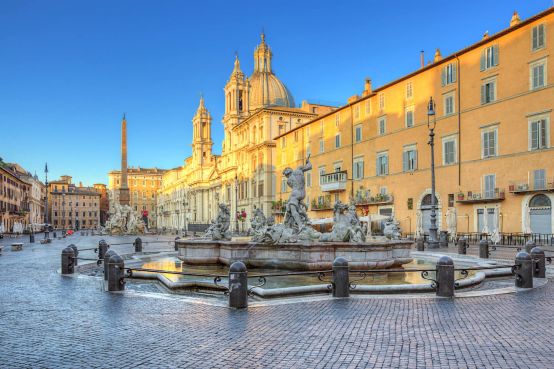Piazza Navona is the most famous example of urban continuity in Rome. It's rectangular form with rounded corners has conserved the shape of a stadium (240 x 65m) that emperor Domiziano (81-96 DC) had built with the function to hold games and sporting competitions and later on gladiator battles. The buildings around the piazza rise up onto the steps of the ancient seating that held 30,000 spectators.
The piazza's name originated from the word ‘Navona' which derives from sporting games (giochi agonali). However popular tradition cited that Navona derived from ‘Navis' because the shape of the square look like a ship with it semi circular short side. It was one of the most densely populated areas of Rome which had a considerable importance in the course of renaissance urban renewal.
In 1477 Sisto IV moved the market of Campidoglio and along with the construction of several noble palaces (palazzo Massimo alle Colonne and palazzo Madama) piazza Navona became the place of residence preferred by the aristocracy. It reached it's peak under Innocenzo X who began the transformation after being elected pope in 1645.
Renovation and restoration work carried out on the outstanding palace and church of S. Agnese, the two fountains constructed by Gregorio XIII (1572-1585) and he had the gigantic fountain ‘Fontana dei Fiumi' erected in the centre of the square.
Over the centuries the square was to be the setting of magnificent carousels and festive processions. Until the XIX century, it was the place were in august aquatic games took place. The square would be flooded by water up to a certain level and the wealthy would pass over it in their carriages whilst the common people would have to wallow. Even today Piazza Navona is one of the most lively squares of Rome. Artists and street vendors entertain the people under late a night.










